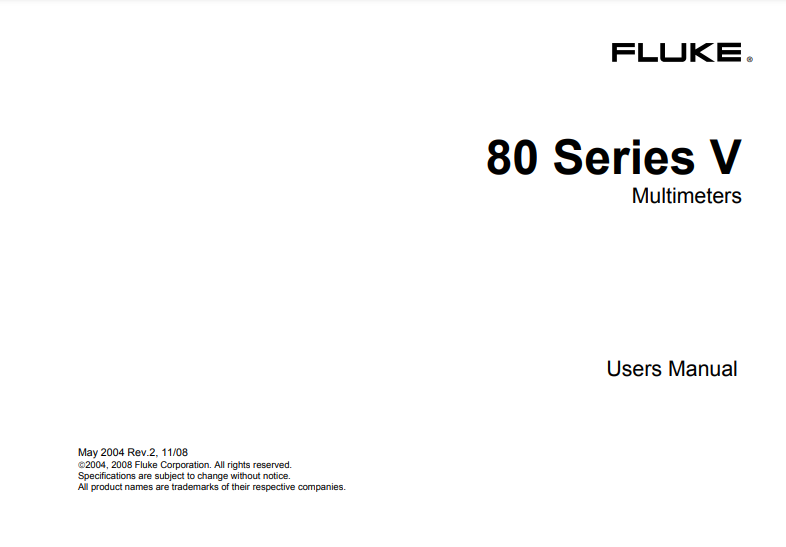Care and Maintenance of Multimeters
The Definitive Guide To Using Multimeters
Care and Maintenance of a Multimeter
Proper care and maintenance of a multimeter involves simple steps such as:
- Keep The Multimeter Clean and Dust-Free
- Store The Multimeter Properly
- Handle The Multimeter with Care
- Check and Replace Batteries
- Avoid Overloading
- Read The Multimeter's Manual
Additionally, regularly calibrating your multimeter helps maintain its accuracy and ensures that it continues to provide reliable readings over time.
Multimeters aren’t exactly the cheapest tool out there. You are going to want to get the most out of the investment you make. With proper care, a multimeter can easily last you decades.
To maximize the longevity and accuracy of your multimeter, proper maintenance and care are crucial. Regular maintenance not only helps it last longer but also ensures you get consistent and precise measurements. This is vital for accurate troubleshooting and analysis.
By investing a little time and effort into caring for your multimeter, you not only safeguard your valuable tool but also ensure that it remains a trustworthy companion in your electrical work, enhancing your productivity and enabling you to tackle challenges with confidence.
the Definitive Guide to Using Multimeters
This is the 15th article in our series, The Definitive Guide to Using Multimeters.
This article delves into the proper care and maintenance of multimeters, from proper to handling to the best storage options.
In This Article
If you missed the start of the series: What Is a Multimeter: The Definitive Guide to Multimeters, check it out now! You will be able to work your way back to this article quite quickly.
The Definitive Guide to Multimeters
- What is a Multimeter?
- Why Are Multimeters Important?
- What Do Multimeters Measure?
- What is the History of the Multimeter?
- What are the Common Types of Multimeters?
- What are Common Multimeter Options?
- What are Some Multimeter Specifications?
- What are Common Uses of Multimeters?
- How Do I Choose the Best Multimeter For The Job?
- How Do I Use a Multimeter?
- How Do I Properly Maintain a Multimeter?
- How Do I Calibrate a Multimeter?
- What is the Future of Multimeters?
- Multimeter FAQs
Keep The Multimeter Clean and Dust-Free
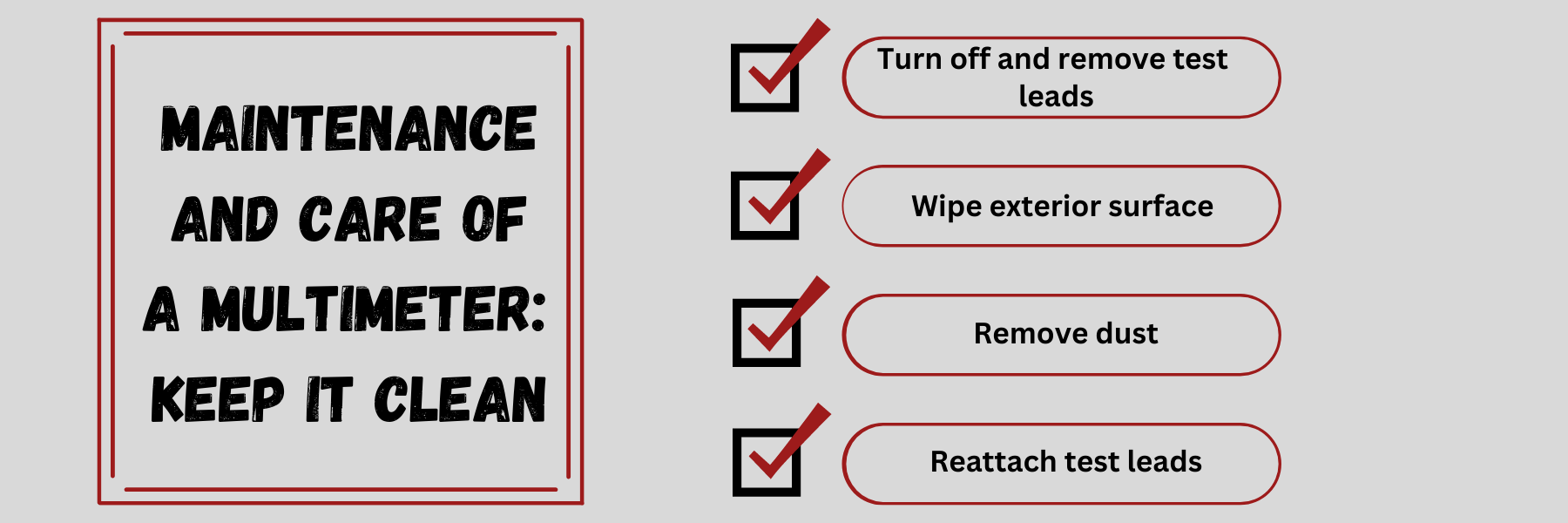
Dust and dirt can accumulate on the surface and probes of your multimeter, affecting its accuracy and performance. Regular cleaning is necessary to prevent these particles from interfering with the electrical connections.
How to Clean a Multimeter
- Turn off the multimeter and remove the test leads.
- Gently wipe the exterior surfaces with a soft, lint-free cloth.
- Use compressed air or a small brush to remove dust from the probes and sockets.
- Reattach the test leads securely once the multimeter is clean.
Fluke, the undisputed leader in multimeters, has a great breakdown of some important things to remember while cleaning a multimeter:
- Use clean cloths or alcohol-based swabs
- Use up to 70% isopropyl alcohol solution
- Use up to 3% hydrogen peroxide solution
- Dry your equipment after every cleaning
- Use soap and water for thorough cleaning of IP67 rated tools (such as the 87V Max)
They also remind us not to do the following:
- Use abrasives or industrial cleaners
- Immerse tools in liquid (e.g. soapy water)
- Use a Fluke Meter Cleaning Wipe for regular cleaning
- Use soap and water (except with IP67-rated tools)
Store The Multimeter Properly
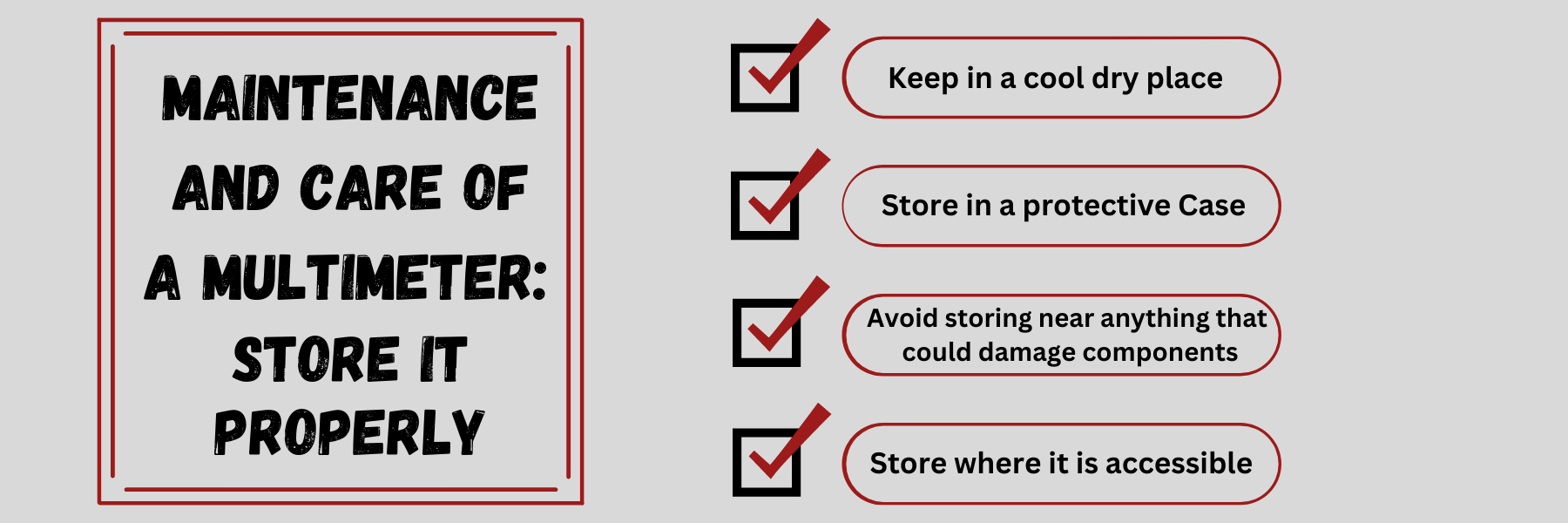
Proper storage is essential to protect your multimeter from physical damage and environmental factors. Follow these guidelines to ensure safe storage:
How to Properly Store a Multimeter
- Store Multimeters in a Cool, Dry Place
- Store Multimeters in a Protective Case
- Store Multimeters Away From Dangerous Conditions
- Store Multimeters Where they Are Accessible
- Store Multimeters Carefully
Store Multimeters in a Cool, Dry Place
Keep your multimeter in a dry and cool place, away from direct sunlight, extreme temperatures or excessive humidity. Be extra sure that no moisture or water can come into contact with the multimeter, to avoid any water damage or circuit shorting possibilities.
Store Multimeters in a Protective Case
Store your multimeter in a protective case or pouch to prevent scratches, impacts, and dust accumulation. The case should provide adequate cushioning and secure the multimeter in place to prevent any accidental movement or damage.
Be sure to use a case that is large enough to keep all the pertinent pieces together in one place. There is nothing worse than having to search around for an hour looking for your test leads right as you are about to start on a project.
Store Multimeters Away From Dangerous Conditions
Avoid storing it near moisture, chemicals, solvents, or magnetic fields that could potentially damage the internal components. Also, try to avoid an situation where electric or physical shock could occur. This means not storing it on the highest shelf or immediately next to a high voltage power panel.
Store Multimeters Where they Are Accessible
Storing the multimeter in a location where it is easily accessible and visible can help in locating it quickly when needed. This goes along with the above point of not storing on the highest shelf away from view.
Store Multimeters Carefully
Inside the case itself, you will want to make sure the multimeter and its components are stored carefully. Some things to pay attention to when doing so are:
- Remove the test leads.
- Wrap or bend the test leads carefully, making sure there's no stress on the fittings.
- Avoid wrapping the test leads around the meter and tossing it into a gang box or tool pouch. This can degrade the integrity of the leads.
- Remove the batteries if you're storing it for a long time. This will prevent corrosion from building up at the battery connections.
Handle The Multimeter with Care
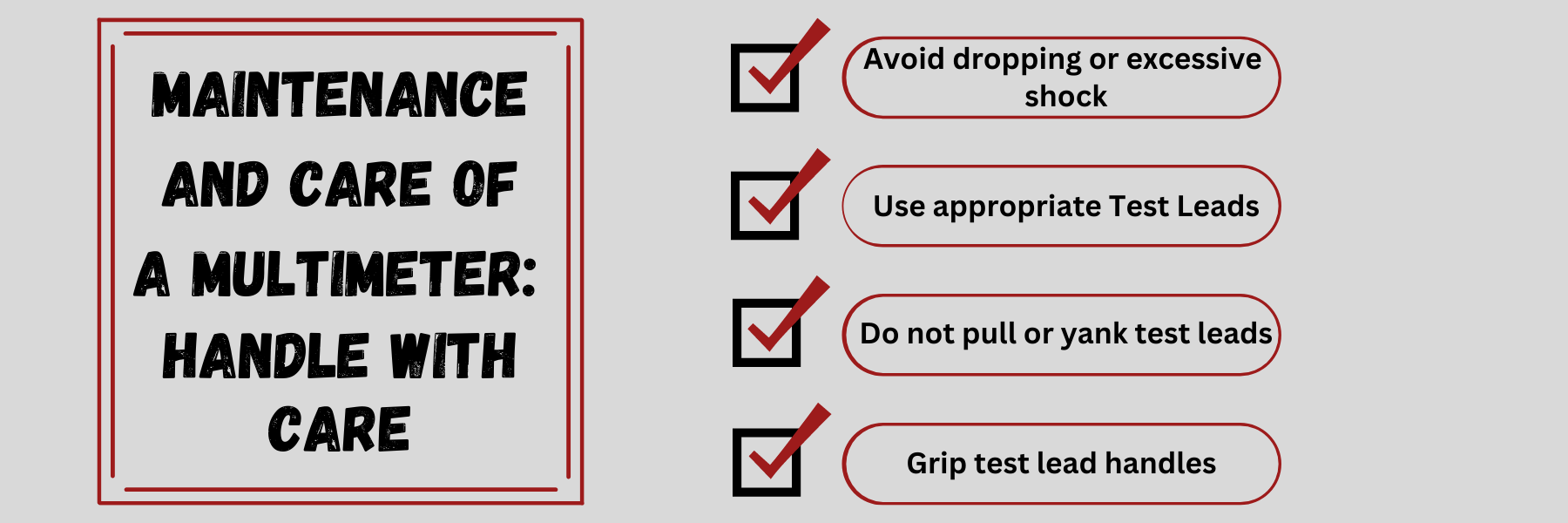
Multimeters are delicate electronic devices that require gentle handling to avoid any accidental damage. Here are some important tips for handling your multimeter with care:
- Avoid dropping or subjecting the multimeter to excessive shock.
- Use the appropriate test leads and probes for the intended measurements.
- Do not pull or yank the test leads forcefully, as it can damage the internal wiring.
- Always grip the test leads by the insulated handles and not the exposed metal tips.
Check and Replace Batteries
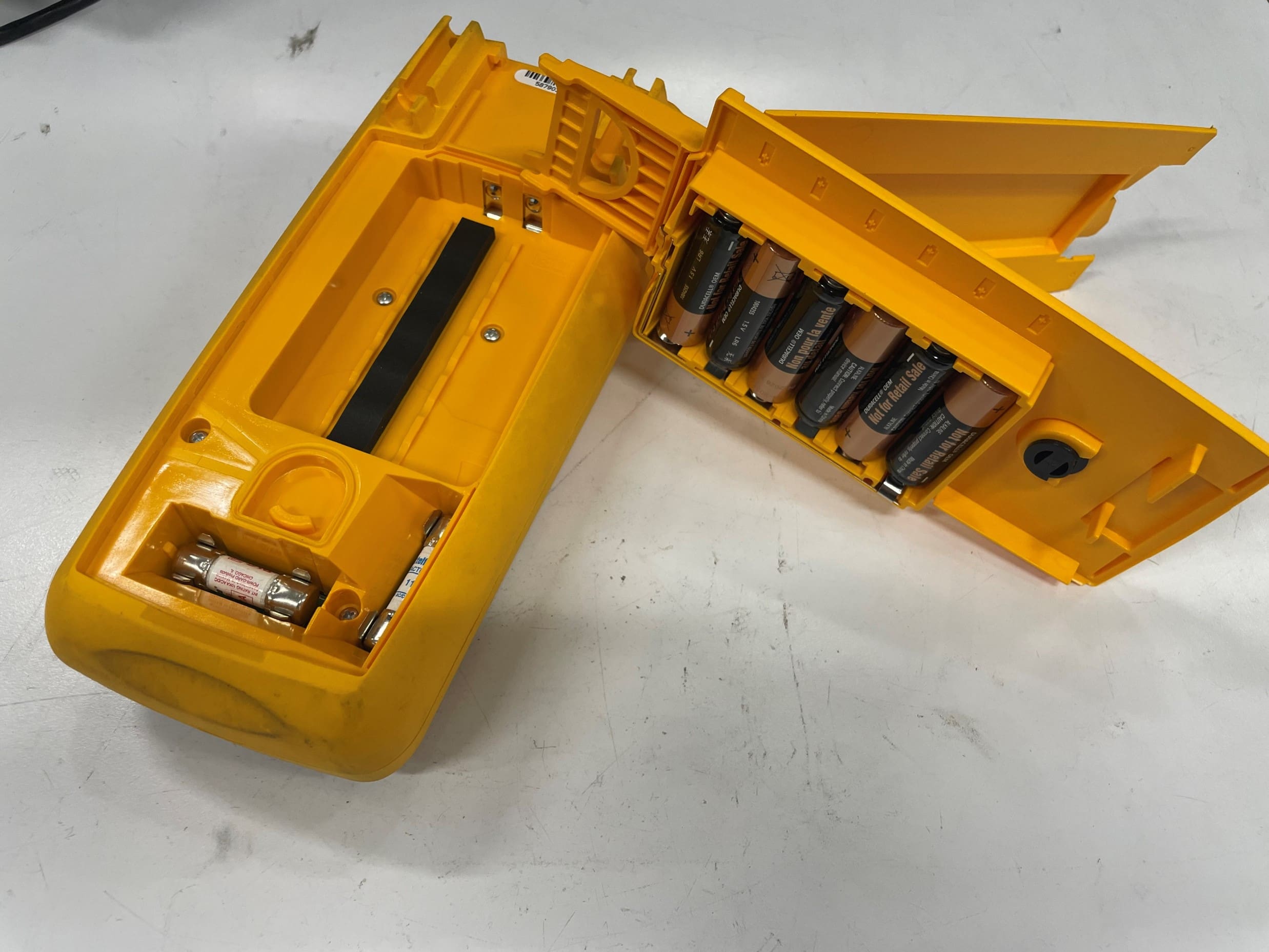
Digital multimeters (DMMs) rely on batteries for their operation, and low battery levels can affect their performance and accuracy. Follow these steps to check and replace batteries effectively:
How to Replace Multimeter Batteries
- Turn off the multimeter and remove the test leads.
- Locate the battery compartment and open it according to the manufacturer's instructions.
- Check the battery levels or use a battery tester to determine their charge.
- If the batteries are low or depleted, replace them with the correct type and ensure proper polarity.
- Close the battery compartment securely before using the multimeter again.
It bears noting that not every multimeter is going to have the exact same process for replacing batteries. This is why getting to know your multimeter and its manual is critical.
Avoid Overloading
As we have mentioned seemingly 100 times by now (it’s that important), not overloading your multimeter is crucial. Every multimeter has its maximum limits for voltage, current, and resistance measurements. Exceeding these limits can cause damage to the multimeter or pose a safety hazard. Follow these guidelines to avoid overloading your multimeter:
How to Avoid Overloading a Multimeter
- Always verify the expected voltage, current, or resistance range before making any measurements.
- Use the appropriate function and range settings on your multimeter.
- Start with the highest range setting and gradually decrease it until you obtain accurate readings.
- If unsure about the magnitude of the measurement, start with a higher range to prevent overloading.
- If the multimeter reads "1" or displays "OL", it's overloaded. You will need to try a higher mode.
The good news is most modern DMMs come with excellent overload protection and can recover automatically.
Read The Multimeter's Manual
Fluke 87V Multimeter User Manual
As simple as this may seem, reading the user manual for your multimeter really is this important. We all know the guy who immediately throws out the instructions. While that may be cool when building a swing set, destroying your expensive multimeter due to pride doesn’t seem as fun.
The manual gives you a complete understanding of the device's features, functions, and how to use it. It has valuable info on setting up the multimeter correctly, choosing the right measurement range, and interpreting the readings accurately. It also has important safety instructions, especially for dealing with high-voltage circuits or specific measurement situations.
By familiarizing yourself with the manual, you can maximize the multimeter's capabilities, avoid potential hazards, and ensure precise measurements in a wide range of electrical and electronic applications.
Perform Regular Multimeter Calibration
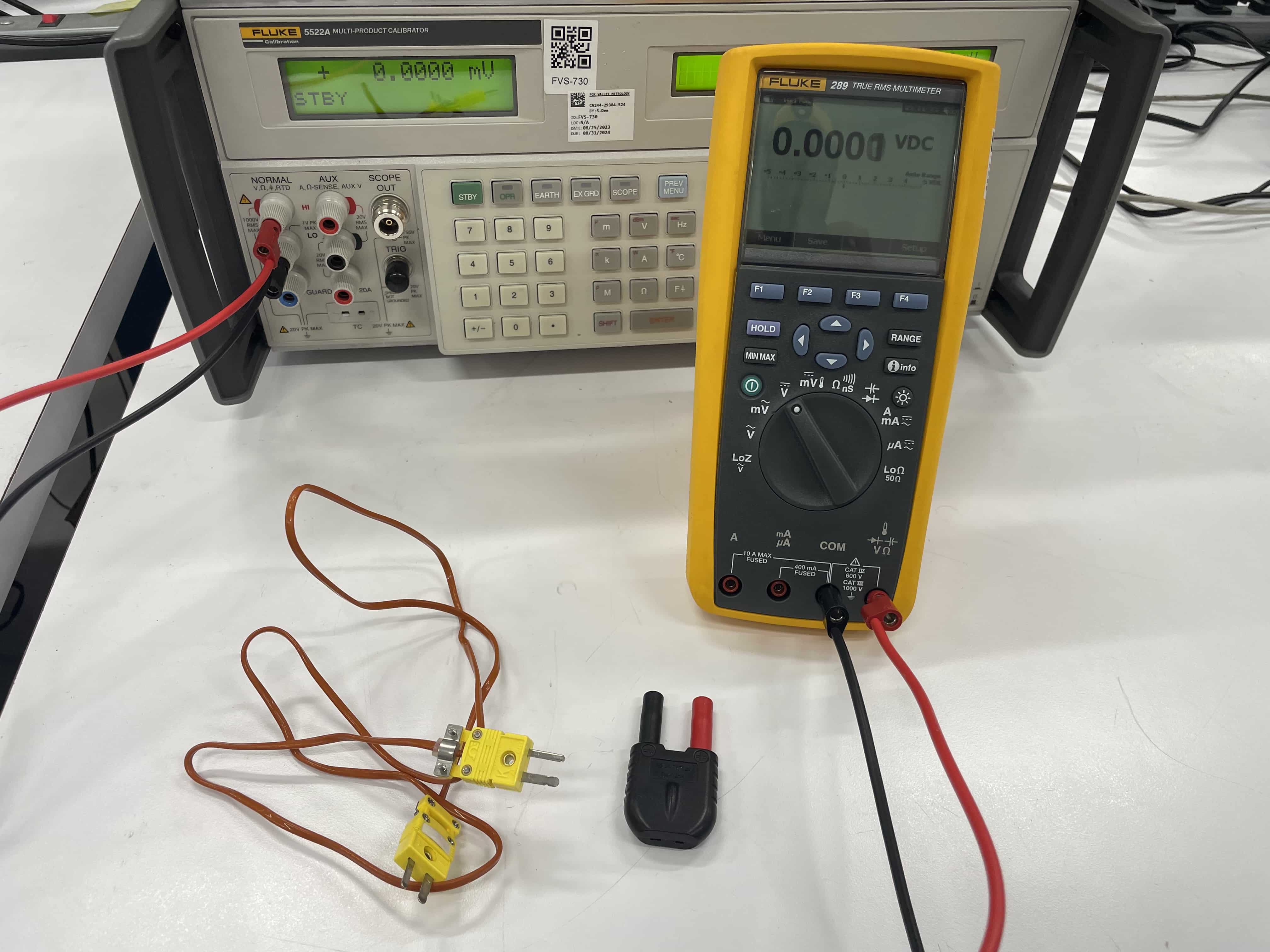
For accurate measurements, make sure to calibrate your multimeter regularly. Calibration means comparing its readings with a known reference value or a certified standard.
Over time, multimeters can drift from their original calibration due to factors such as temperature variations, mechanical stress, and component aging.
By having your multimeters calibrated regularly, you can have confidence in the accuracy of your measurements, which is crucial for troubleshooting, maintenance, and quality control processes.
Calibration also helps identify and correct any systematic errors, ensuring consistent and precise readings. It is a proactive step that ensures the integrity of your measurements and helps maintain the overall efficiency and safety of your electrical work.
Here are some points to consider regarding calibration:
- Follow the manufacturer's guidelines for calibration intervals and procedures.
- If your multimeter is used frequently or subjected to harsh conditions, consider more frequent calibrations.
- Professional calibration services can provide accurate and traceable calibration results.
What's Next: The Definitive Guide to Multimeters
Now that we know the best way to care for and maintain multimeters, let's expand on the most important part of that process: multimeter calibration.
In the next section, we will dive into everything you need to know about multimeter calibration, from how frequently to have your multimeter calibrated to the exact process of multimeter calibration (should you choose to perform the calibration yourself). Lets get started and head to Section 16: Multimeter Calibration.
ISO/IEC 17025 Accredited Multimeter Calibration
Fox Valley Metrology proudly offers accredited precision measuring instrument calibration services of Multimeters. We calibrate all types of Multimeters at our offices throughout the country, meaning we are sure to have local Multimeter calibration services near you.
- ✓ ISO 17025 accredited calibration vendor
- ✓ Broadest calibration scope in the industry
- ✓ 3-5 day turnaround time for laboratory calibrations
- ✓ Pickup and delivery service options available
- ✓ Onsite calibrating service options
